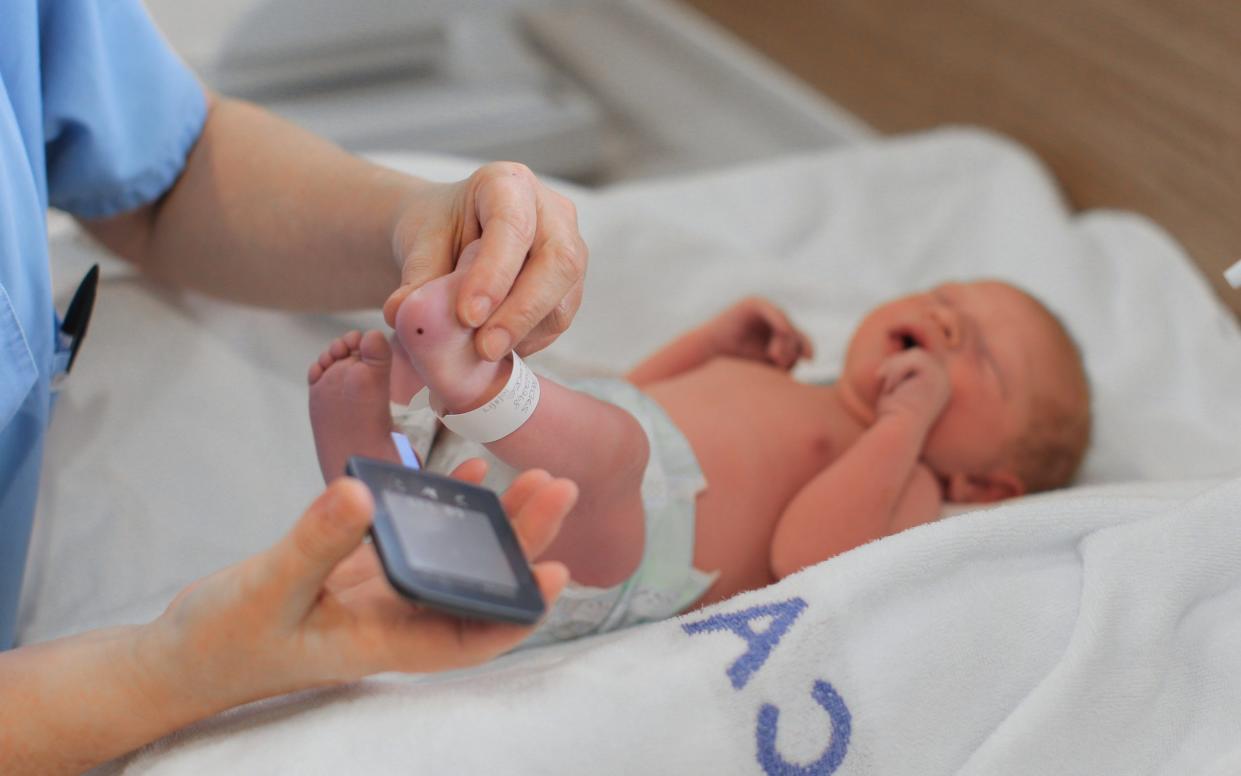Blood test can detect cause of baby brain damage

A simple blood test can show how to treat babies who were starved of oxygen before or during birth.
About 1,625 of the 650,000 babies born annually in Britain suffer from hypoxic-ischaemic encephalopathy (HIE), which can result in conditions such as cerebral palsy, epilepsy, deafness or blindness.
Treatment that usually involves whole-body cooling – therapeutic hypothermia – can help prevent death and disability, but in some cases the therapy has been shown to increase the risk of mortality.
Now scientists have found out why. A team at Imperial College has discovered that oxygen starvation can either happen over a long period of time, because of maternal stress, poor nutrition or infection in pregnancy, or alternatively, as a result of an incident like maternal bleeding.
While cooling is likely to work for the latter, it may be more dangerous for the oxygen depletions over longer periods.
A new blood test, developed by Imperial, can pick up the cause of the brain damage by looking at genetic markers.
Causes of brain injury differ
The team made the breakthrough after realising that babies in low-income countries, such as India, Bangladesh and Sri Lanka, were not getting well from the cooling treatment which suggested their brain injuries may have a different cause.
There was a dramatic divergence in gene expression between the babies and those in high-income countries like Britain, suggesting a different underlying cause of brain injury.
Prof Sudhin Thayyil, the lead investigator from the department of brain sciences at Imperial College London, said: “Although cases of brain injury in babies may appear similar, they can be quite different in terms of how they come about, as our study shows.
“The gene expression patterns we saw in babies from low-income countries were similar to what you would see in people with sleep apnoea, suggesting that they experienced intermittent hypoxia in the womb and at birth.
“We believe this is brought on by multiple chronic stresses during pregnancy such as poor nutrition or infection, as well as the normal labour process and uterine contractions, which leads to further hypoxia and ultimately injury to the baby’s brain.
“On the other hand, gene expression patterns in babies from HICs suggested a single, acute cause of brain injury, for example complications during birth like maternal bleeding, leading to a sudden drop in blood oxygen levels in the foetus.”
HIE leading cause of death among babies
Before the development of therapeutic hypothermia, about a quarter of affected newborn babies were likely to die from lack of oxygen to the brain, while the 75 per cent that survived were at risk of severe disability.
The findings could eventually lead to a simple test to quickly diagnose brain injury in newborns and help with treatment decisions.
Globally, HIE is a leading cause of death and disability among babies born at full term, affecting around three million babies every year.
South Asia, and particularly India, has the highest disease burden, with the country accounting for 60 per cent of all HIE-related deaths in the world.
Prof Swati Manerkar, a study co-author from Lokmanya Tilak Municipal Medical College in Mumbai, India, said: “The key for clinicians, anywhere in the world, is to be able to identify which type of brain injury they are dealing with as soon as possible – and that’s something we’re currently working on.”
The findings were published in the journal JAMA Network Open.

